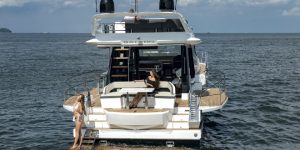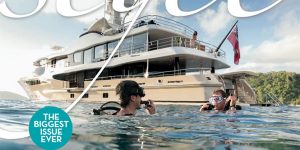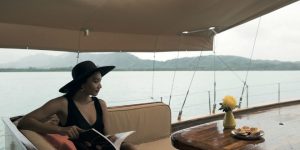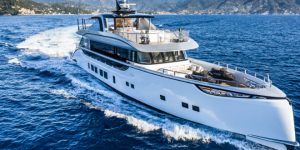Clipper race 2017: Sir Robin Knox-Johnston on the 11th around-the-world race
We take a look at an expert’s view on Clipper’s around-the-world sailing expedition

Sir Robin Knox-Johnston
Sailing is one of the greatest sports that anyone can do, rich or poor and whatever age. Once we get into our boats and sail away, we experience the freedom that comes from being in total charge of our destiny, with only the natural laws of the sea to confine us.
With four circumnavigations under my belt, two solo, including the first non-stop, one Whitbread and one win of the Jules Verne Trophy, I wanted to make the sport more accessible to everyone everywhere. More people have climbed Mount Everest than have circumnavigated the world by sea in yachts.
I discovered this fact when mountaineering with Sir Chris Bonington in Greenland, an isolated land, where we sailed in through the ice to reach our objective north of the Arctic circle.
Working through the ice, basically as hard as rock but floating, meant taking great care and it was very slow progress, but it was one of the most stimulating voyages I have ever made, and I would recommend it to everyone except that I rather enjoy the lack of other people in those northern waters.
However, this simple comparison of numbers started me thinking. How many people would like to achieve the ultimate in sailing, a circumnavigation, but cannot afford a boat, or don’t have the confidence to take it on in their own boat, but would be willing to pay if the boat, organisation, route, training, food, clothing, and a good skipper were made available?
Some back-of-the-envelope calculations indicated that if one bought the boats, and made a series of such circumnavigations, the cost to a sailor would be about half of the cost of climbing Mount Everest. Once such an idea is formed, it is best to push ahead, or someone else will think of it.
An advert in the newspapers brought more than 8,000 replies and so the Clipper Around-the-World yacht race was born. We built eight 60 foot yachts, selected skippers, interviewed and trained the amateur crews, and sorted out the route in ten months. The first race started from Plymouth in 1996.
Since then we have run ten races, sent more than 4,000 people off on them, and are now using our third fleet of 12 Castro- designed identical 70 feet. With a matched fleet, success is down to the crews.
We are about to embark on our 11th event. With more than 700 people booked for all or one of the legs of the forthcoming race and set up for compulsory training (that is a safety issue), this will put our total numbers above 5,000.
It is the only around the world race open to amateurs, but the race track and challenges, whether it be the calms of the Doldrums or the huge seas of the Southern Ocean and North Pacific, are the same as the professionals in the Vendee and Volvo race.
Initially, the crews were largely British, but now more than 40 percent are from other countries, a good few from Asia. Nearly half the crews are women, and about the same percentage have never been aboard a boat before they come to us for the four weeks compulsory training. Our objective has always been to turn out good seamen and women. We rely on competitive human nature to get them racing. And the racing is intense, with honour at stake.
Some ports have been a regular part of our schedule, including Nongsa Point in Batam and Republic of Singapore Yacht Club, but our longest partnership has been with the Olympic city of Qingdao.
We are coming up for our seventh visit to that city, and each time we have had their citizens in the race, almost 50 now, which is creating a core of experienced ocean sailors who will help to develop Chinese yachting for the future. The port sponsorships are important, as their financial contribution keeps our costs down and enables us to keep the charges to crews at an accessible level.
This article was written by Sir Robin Knox-Johnston and was first published in Yacht Style 38.









